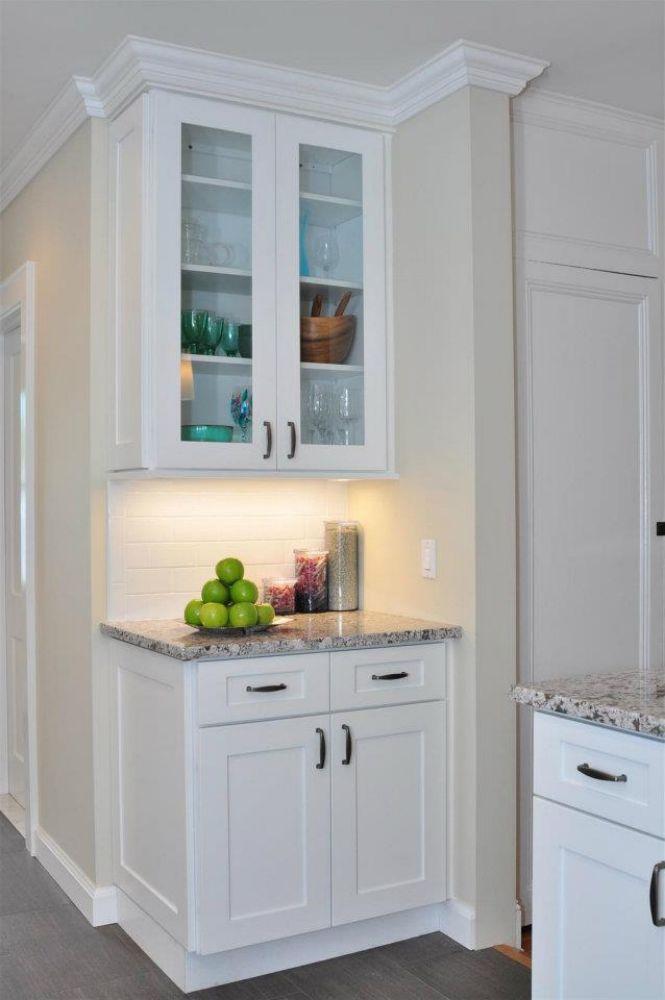Understanding the Importance of Certification in Cabinet Manufacturing
In the modern home improvement and construction industry, certification has become a symbol of credibility, safety, and environmental responsibility. When it comes to cabinetry, certification ensures that products not only meet performance and durability standards but also comply with health and environmental regulations.
The certification process for cabinet manufacturers involves verifying that cabinets are built using materials and production methods that minimize harmful emissions, conserve resources, and promote consumer safety. As homeowners become more aware of indoor air quality and sustainability, the demand for certified cabinetry continues to rise.
One of the most prestigious certifications in the industry is the Greenguard Gold certification, known for its strict testing standards related to indoor air emissions. Manufacturers who achieve this certification demonstrate a commitment to producing cabinetry that contributes to healthier living spaces. The Certification process for cabinet manufacturers under the Greenguard Gold program reflects the highest level of craftsmanship, environmental care, and safety assurance.
Why Certification Matters in the Cabinet Industry
Certification serves as a trusted seal of approval that gives consumers confidence in their purchase. Cabinets play an essential role in everyday life—used in kitchens, bathrooms, and workspaces—and are often constructed from materials that can impact indoor air quality.
Without proper certification, consumers risk purchasing cabinets made with high-emission adhesives, finishes, and composite wood that release volatile organic compounds (VOCs) over time. These emissions can cause respiratory issues, allergies, and long-term health effects.
Certified cabinet manufacturers, on the other hand, follow precise standards that ensure their products are safe, durable, and environmentally friendly. Certifications such as Greenguard Gold, CARB Phase 2, and KCMA (Kitchen Cabinet Manufacturers Association) help set manufacturers apart by validating their products as both sustainable and high-performing.
Key Certifications for Cabinet Manufacturers
Before diving into the certification process for cabinet manufacturers, it’s important to understand the different types of certifications that guide the industry. Each certification focuses on a specific aspect of safety, durability, or environmental performance.
-
Greenguard Gold Certification – Verifies low chemical emissions and promotes healthy indoor air quality.
-
CARB Phase 2 Compliance – Sets limits for formaldehyde emissions from composite wood materials.
-
KCMA Certification – Evaluates the durability, strength, and performance of cabinetry under real-world conditions.
-
FSC (Forest Stewardship Council) Certification – Ensures that wood materials are responsibly sourced from sustainable forests.
-
EPA TSCA Title VI – Federal regulation that aligns with CARB standards for wood-based products.
Among these, the Greenguard Gold certification has emerged as the gold standard for health-conscious homeowners and eco-friendly manufacturers alike.
The Foundation of the Greenguard Gold Certification
The Greenguard Gold certification was developed by UL Environment, an independent global organization specializing in product testing and safety verification. This certification focuses on reducing indoor chemical exposure by setting limits on VOC emissions from furniture and building materials.
For cabinet manufacturers, this means adhering to extremely low emission thresholds for formaldehyde and other potentially harmful compounds. Products that carry this certification are tested under controlled laboratory conditions to ensure they meet the strictest air quality standards.
Greenguard Gold certified cabinets are safe for use in schools, hospitals, and homes, offering peace of mind for families who prioritize cleaner, healthier living environments.
Step 1: Preparation for Certification
The certification process for cabinet manufacturers begins with thorough preparation. Before testing, manufacturers must evaluate every aspect of their materials and production processes to confirm compliance with low-emission and sustainability requirements.
Key steps in this phase include:
-
Material Review: Assessing the composition of wood, adhesives, and coatings used in cabinet construction.
-
Supplier Compliance: Ensuring all raw materials come from approved, environmentally responsible sources.
-
Documentation: Preparing detailed records on product components, finishes, and assembly methods.
-
Internal Testing: Conducting in-house VOC assessments before applying for certification.
This groundwork ensures that once official testing begins, the product stands a strong chance of meeting the necessary standards.
Step 2: Formal Application and Documentation Submission
Once preparation is complete, the manufacturer submits a formal application to the certification authority, such as UL Environment for Greenguard Gold. This step involves providing detailed documentation, including:
-
Complete product descriptions and specifications.
-
Lists of materials, coatings, and adhesives used.
-
Safety Data Sheets (SDS) for each raw material.
-
Information about the manufacturing process and quality control systems.
The certifying body reviews this information to verify that the product qualifies for laboratory testing. Only products that pass this initial review proceed to the testing phase.
Step 3: Product Testing and Environmental Chamber Analysis
Testing is the most critical stage of the certification process for cabinet manufacturers. During this phase, cabinets are placed inside environmental chambers that mimic real-life indoor environments.
The testing process includes:
-
Baseline Testing: Measuring emissions under standard temperature and humidity conditions.
-
Dynamic Testing: Monitoring VOC release over time to ensure emissions remain consistently low.
-
Chemical Identification: Using advanced tools such as gas chromatography and mass spectrometry to detect harmful compounds.
-
Air Quality Simulation: Evaluating how the cabinets would affect indoor air quality under typical use conditions.
If the test results show that chemical emissions fall within the permissible limits, the product advances to the evaluation stage.
Step 4: Emission Threshold Evaluation
After testing, the results are compared against strict emission limits defined by UL Environment and other regulatory agencies. The Greenguard Gold certification has some of the lowest allowable limits in the industry:
-
Formaldehyde: ≤ 7.3 µg/m³
-
Total VOCs (TVOCs): ≤ 220 µg/m³
-
Individual Chemical Compounds: Within safe exposure limits set by the U.S. EPA and WHO.
Meeting these thresholds confirms that the cabinet product does not release harmful pollutants into indoor environments and can be safely used in sensitive spaces like schools and hospitals.
Step 5: Certification Approval and Labeling
Once the manufacturer successfully passes all testing and evaluations, UL Environment issues the official Greenguard Gold certification. This certification authorizes the manufacturer to label their products as Greenguard Gold certified.
The certification label serves as a mark of assurance that the product meets the highest standards for low emissions and environmental performance. Additionally, certified products are listed in UL’s public SPOT database, which designers, builders, and consumers can use to verify authenticity and review emission data.
Step 6: Ongoing Compliance and Re-Certification
The certification journey doesn’t end with approval. Manufacturers must maintain compliance through ongoing testing and audits.
Greenguard Gold certification requires manufacturers to:
-
Submit samples for annual re-testing.
-
Notify UL of any changes in materials or manufacturing processes.
-
Maintain consistent documentation of raw material sources and quality control procedures.
-
Allow random facility inspections.
This continuous verification ensures that certified cabinets maintain the same level of safety and quality throughout production.
The Role of Sustainable Materials in Certification
Sustainability is a cornerstone of the certification process for cabinet manufacturers. Certified manufacturers prioritize the use of materials that are safe for consumers and environmentally responsible.
Some key sustainable practices include:
-
Using FSC-certified wood: Guarantees that the wood comes from responsibly managed forests.
-
Selecting low-VOC adhesives and finishes: Minimizes harmful emissions during manufacturing and use.
-
Recycling and waste reduction: Implementing production methods that minimize waste and resource consumption.
-
Eco-friendly packaging: Using recyclable or biodegradable materials for packaging and shipping.
These initiatives not only contribute to certification success but also align with global efforts toward sustainable living.
How Certification Affects Manufacturing Operations
Achieving certification often requires manufacturers to make operational changes that improve product quality and sustainability. These adjustments may include:
-
Upgrading equipment to accommodate water-based coatings.
-
Training employees in eco-friendly manufacturing techniques.
-
Installing emission control systems in factories.
-
Strengthening supplier partnerships to ensure compliant materials.
Though these changes may increase production costs initially, they lead to higher efficiency, reduced waste, and long-term financial benefits.
Benefits of Certification for Manufacturers and Consumers
The certification process for cabinet manufacturers benefits both producers and buyers in significant ways:
For Manufacturers:
-
Builds trust with consumers and business partners.
-
Differentiates products in a competitive market.
-
Qualifies products for LEED and WELL building credits.
-
Increases access to environmentally conscious projects.
For Consumers:
-
Ensures cabinets are safe, durable, and sustainable.
-
Reduces exposure to VOCs and formaldehyde.
-
Enhances indoor air quality and overall well-being.
-
Provides assurance that the product meets global health standards.
Certification turns an ordinary product into a verified commitment to quality, safety, and sustainability.
Challenges in the Certification Process
While certification offers clear benefits, manufacturers may face several challenges along the way:
-
High Testing Costs: Laboratory testing and audits can be expensive.
-
Material Sourcing Issues: Finding low-emission or certified suppliers may be difficult.
-
Production Adjustments: Transitioning from solvent-based to water-based systems requires re-engineering.
-
Documentation Requirements: Maintaining thorough compliance records is time-consuming.
Despite these hurdles, most manufacturers find that the long-term rewards—brand credibility, consumer loyalty, and regulatory compliance—far outweigh the costs.
The Connection Between Certification and Indoor Air Quality
One of the most significant outcomes of certification is improved indoor air quality. Cabinets made from uncertified materials can release harmful pollutants for years after installation, negatively impacting health.
Certified cabinets, especially those that are Greenguard Gold approved, emit only trace levels of VOCs and formaldehyde. This contributes to cleaner, fresher indoor environments, reducing risks of allergies, respiratory problems, and other health issues.
For homeowners, schools, and healthcare facilities, certified cabinetry represents a smart and responsible choice for long-term well-being.
Certification and Green Building Standards
The certification process for cabinet manufacturers is closely linked to green building programs such as:
-
LEED (Leadership in Energy and Environmental Design)
-
WELL Building Standard
-
BREEAM (Building Research Establishment Environmental Assessment Method)
Incorporating certified cabinetry into construction or renovation projects can help earn points toward these sustainability standards. As green building practices continue to grow worldwide, certified cabinets are becoming essential components of environmentally responsible design.
Future of Cabinet Certification and Sustainability
The future of cabinet manufacturing will be defined by transparency, innovation, and zero-emission production. Manufacturers are increasingly adopting advanced materials and digital tracking systems to ensure compliance and sustainability.
Emerging trends include:
-
Bio-based adhesives and coatings.
-
Carbon-neutral manufacturing processes.
-
Automated compliance tracking systems.
-
Full lifecycle transparency through blockchain technology.
These innovations will further strengthen the connection between certification and global sustainability efforts.
Conclusion
The certification process for cabinet manufacturers is far more than a regulatory requirement—it’s a symbol of commitment to health, safety, and environmental responsibility. From material sourcing and testing to ongoing compliance, certification ensures that every cabinet meets the highest possible standards for quality and performance.
Manufacturers who invest in certifications like Greenguard Gold not only protect consumers from harmful emissions but also contribute to a cleaner, greener planet. For homeowners, certified cabinets offer peace of mind, improved indoor air quality, and confidence in a sustainable investment.
Ultimately, certification transforms cabinetry from a functional necessity into a statement of craftsmanship, care, and consciousness—where design meets responsibility and beauty supports well-being.

